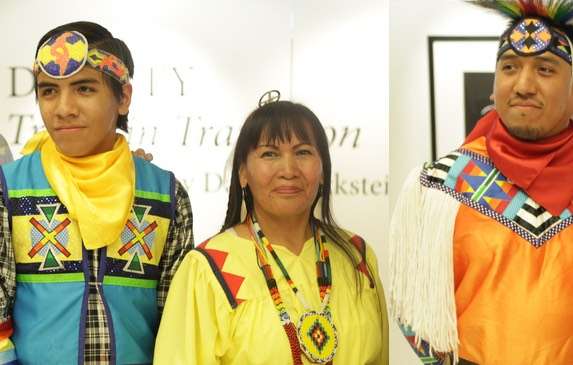County in Texas is Helping Veterans Pay Their Utility Bills
Hidalgo County, Texas honors their low-income veterans by keeping their lights on and water running.

Deaths by suicide among an Apache tribe in Arizona dropped by nearly 40 percent between 2006 and 2012 compared to the previous six-year period.
The substantial reduction came after White Mountain tribal leaders became proactive in passing legislation to develop a surveillance system and intensive prevention program, which tracks and triages those with suicide attempts and suicidal thoughts.
"Suicide is a public health problem that many don't see as preventable," says study leader Mary Cwik, PhD, a clinical psychologist and researcher at the Johns Hopkins Center for American Indian Health at the Bloomberg School. "In recent years, suicide is the leading cause of death globally for girls between the ages of 15 and 19. This study shows how a courageous community used legislation and community mental health workers to successfully address suicide as a public health crisis."
The work of the tribe also included training for adults to identify at-risk youth; two school-based programs — one enlisting elders to promote cultural engagement, and the other promoting coping and problem-solving skills — screening and interventions in the tribe's emergency rooms to connect those who attempt suicide or experience a binge drinking or drugging episode with counseling; and a community-based media campaign to promote prevention education.
"We are proud of our Tribal Council for passing a law in support of a community-based suicide prevention surveillance system," says Novalene Goklish, BS, outreach team supervisor and member of the White Mountain Apache Tribe who was involved in the study. "We are determined to let our Apache people who are hurting know that there is real help for them."
From 2001 to 2006, the suicide rate among the White Mountain Apache members between the ages of 15 and 24 was 13 times that of the general U.S. population. When the tribe realized the extent of the disparity, they reached out to their long-time partner, the Johns Hopkins Center for American Indian Health, to analyze surveillance data and design and implement a comprehensive prevention program.
The study, from the Johns Hopkins Bloomberg School of Public Health, found that in the wake of the new programs, suicide deaths and attempts fell significantly among tribe members. Overall, they found, suicide rates dropped by 38.3 percent, while national rates remained stable or rose. This included a 60-percent decrease among the 25-to-34-year-old group and a 37-percent decline among those between the ages of 20 and 24.
What's more, the downward trend in deaths during the study period appeared to be mirrored in suicide attempts. The annual number of attempts decreased from 75 in 2007 to 25 in 2012.
To achieve these successes, the tribe developed a unique community surveillance system that tracks and triages suicide deaths, attempts, and suicidal thoughts with technical assistance from the Johns Hopkins researchers. After an incident is reported, Apache outreach workers follow up with in-person visits to verify what happened, listen to the individual's story, provide emotional support, and connect individuals to care. These staff members also follow up to monitor the individual's welfare over time.
The surveillance system, which they call Celebrating Life, has several key components:
The researchers and the tribe have been approached by at least 10 other tribes in need. They believe their program will not only help American Indians, but other communities at high risk for suicide.
The study was published in the November issue of the American Journal of Public Health.
SHARE the Good News…
Be the first to comment